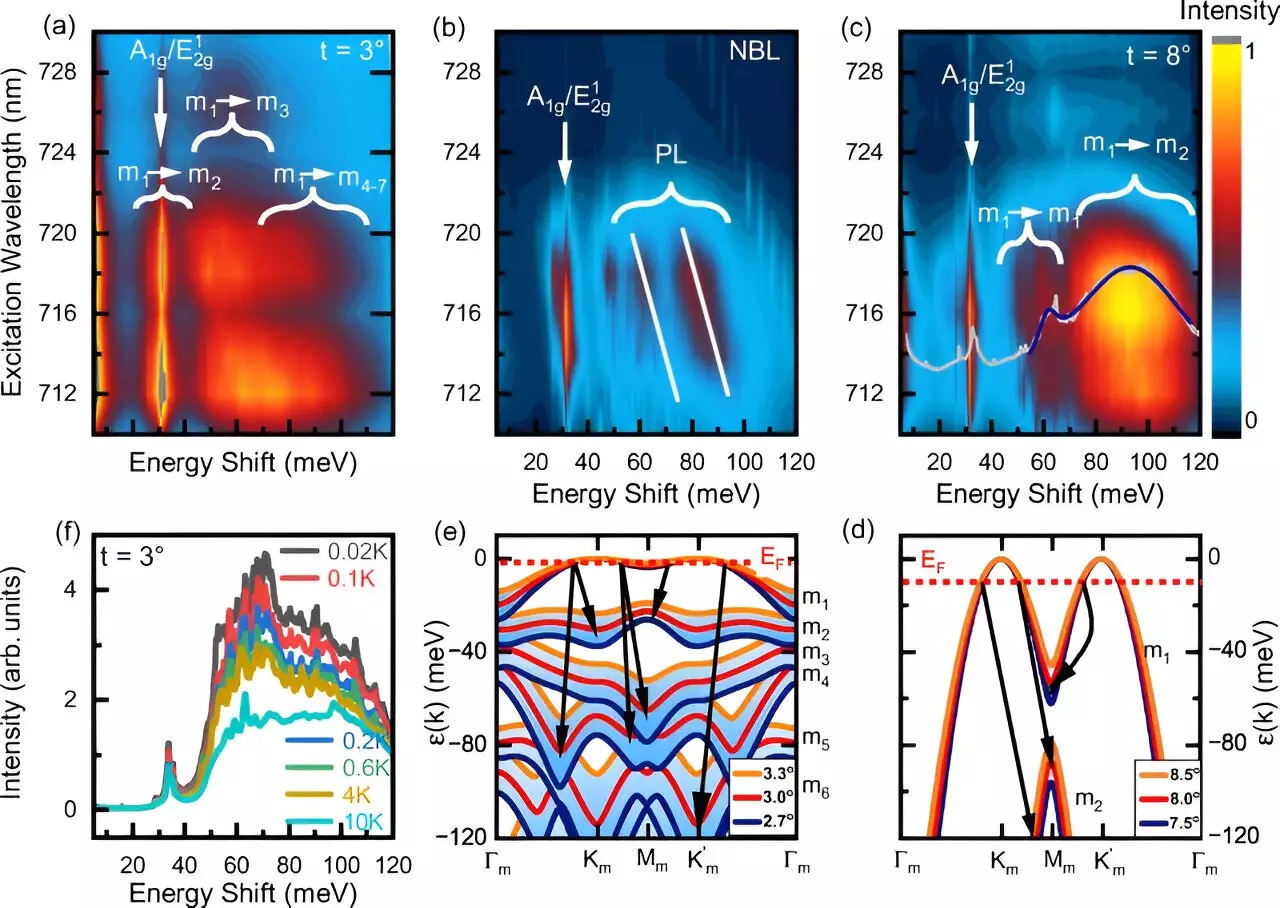The world of materials science is constantly evolving, pushing the boundaries of what we know about the properties of matter. One intriguing aspect of this field is the transformation that occurs when a material is made thinner and thinner. It’s almost like witnessing a magic trick – a two-dimensional material composed of just one or two layers of molecules can exhibit completely different properties compared to its thicker counterpart.
A team of researchers led by physicist Prof. Ursula Wurstbauer from the University of Münster is delving into the realm of two-dimensional crystals to understand how their properties can be manipulated. These crystals have the potential to behave as insulators, electrical conductors, superconductors, or even ferromagnets. By exploring the interactions between charge carriers (electrons) and the energy landscape of these crystals, the team aims to unlock their full potential.
In a groundbreaking study published in Physical Review Letters, the researchers have successfully generated and quantitatively demonstrated collective excitations of charge carriers within different energy landscapes. This achievement sheds light on the electronic characteristics of crystal structures and provides valuable insights into ways to influence them. The key to achieving diverse properties lies in stacking two layers of a two-dimensional crystal on top of each other and twisting them slightly. This simple act creates moiré patterns, akin to the intricate designs formed by thin layers of fabric overlapping each other.
The formation of moiré patterns alters the energy landscape of the crystals, causing electrons to move at a slower pace and interact more profoundly with each other. This phenomenon, known as strongly correlated behavior, leads to fascinating outcomes. Prof. Wurstbauer compares the behavior of electrons within these patterns to the “wild” dancing observed in a disco, highlighting the unconventional nature of their movement. The specific pattern and number of electrons present dictate the formation of correlations among them, resulting in unique electronic properties.
Beyond the realm of basic research, these material systems hold promise for innovative applications in quantum technology and the development of neuromorphic components and circuits. The team, comprising researchers from multiple institutions, combined experimental work with theoretical analyses to investigate different two-dimensional crystals such as graphene, molybdenum diselenide, and tungsten diselenide. Utilizing optical spectroscopy methods at cryogenic temperatures, they were able to delve deeper into the electronic behavior of these materials.
The exploration of two-dimensional materials opens up a world of possibilities for enhancing our understanding of the fundamental properties of matter. By manipulating the energy landscapes of crystals and harnessing the collective interactions of charge carriers, researchers are paving the way for groundbreaking advancements in material science and technology. The intricate dance of electrons within moiré patterns serves as a captivating illustration of nature’s complexity and the endless potential for innovation in the field of materials science.


Leave a Reply